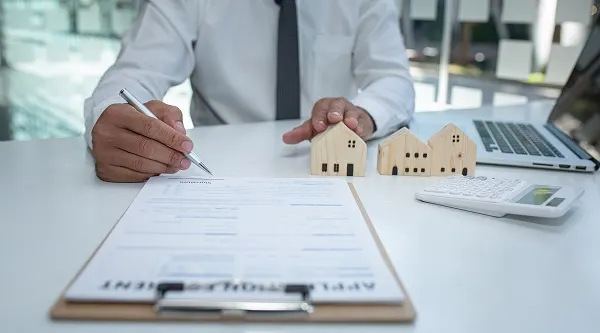Table of Content
Home Loan refers to the credit or financial assistance availed from a financial institution (lender) such as a Banks or Non-Banking Financial Companies (NBFC) for buying or constructing a house. This is generally a long-term loan that has to be repaid over several years through monthly payments
A Home Loan refers to financial assistance obtained from a financial institution, such as banks or Non-Banking Financial Companies (NBFC), for the purpose of purchasing or constructing a house. Typically, this is a long-term loan that requires repayment over several years through monthly installments known as Equated Monthly Installments (EMI).
In a progressive nation like India, where the inclusion of women in the economy and decision-making is actively supported through women empowerment, various incentives are provided by both the government and financial institutions to promote female homeownership.
Furthermore, according to research conducted by various financial institutions, credit reporting companies, and research firms, women are statistically less likely to default on loans compared to men. Consequently, lenders tend to prefer women applicants, either as the main applicant or co-applicant, for Home Loans.
Benefits for Women Home Loan Applicants
Many banks offer a discount on Home Loan interest rates for women buyers, typically ranging from 0.05% to 0.3% compared to the rates charged to male applicants. The extent of this concession may vary from one bank to another.
While this interest rate reduction might appear modest, it significantly impacts the EMI amount, considering the substantial sum involved in a Home Loan.
For example, let's consider a Home Loan of Rs. 50 lakhs at an interest rate of 7.8% for women applicants and 8% for all other applicants. The EMI for women applicants amounts to Rs. 41,200, while it is approximately Rs. 41,825 for other applicants. This results in an interest saving of Rs. 675 per month and around Rs. 1.5 lakhs over a 20-year tenure.
Bank-wise Home Loan Interest Rates for Women
Below are some of the lenders offering reduced interest rates on Home Loans for women borrowers, as of January 2024.
|
Bank |
Interest Rate for Others |
Interest Rates for Women |
Concession |
|
HDFC Bank |
8.50% |
8.35% |
0.15% |
|
State Bank of India |
8.95% |
8.90% |
0.05% |
|
ICICI Bank |
8.75% |
8.10% |
0.65% |
|
Indian Bank |
8.95% |
8.40% |
0.55% |
|
IndusInd Bank |
8.40% |
8.05% |
0.35% |
Stamp Duty Rebate
To promote homeownership among women, many state governments provide a rebate in Stamp Duty payable on buying a home.
Stamp Duty is a tax payable on the purchase of a property, which is usually around 5- 7% of the agreement value of the property being purchased. This rate varies from state to state. The stamp duty makes up a considerable part of the upfront payment required while buying a house, which includes the Down payment of 10-25% as per the loan amount, and Stamp Duty of 5-7% as per the state.
So, to ease the financial burden on the home buyer, some state governments give this concession in Stamp Duty to women home buyers.
As of January 2024, some of the states offering a rebate on Stamp Duty for women are-
|
State |
Stamp Duty for Males |
Stamp Duty for Females |
Joint Ownership |
|
Delhi |
6% |
4% |
5% |
|
Uttar Pradesh* |
7% |
6% |
6.5% (Male and Female) 6% (Female and Female) |
|
Bihar* |
6.3% |
5.7% |
6% |
|
Odisha |
5% |
4% |
4% |
|
Uttarakhand |
5% |
3.75% |
4.37% |
|
Haryana |
7% |
5% |
4% |
|
Maharashtra |
6% |
5% |
6% |
*In Bihar, the stamp duty is 6% for all individuals. However, if a male sells a property to a female, she gets a 0.4% discount on stamp duty (5.6%); while if a female sells a property to a male, he has to pay an additional 0.4% stamp duty (6.4%).
*In Uttar Pradesh, females are entitled to a discount of Rs. 10,000 in addition to the 1% rebate in Stamp Duty.
Government Subsidy
In an effort towards increasing women homeownership, the government provides an interest subsidy of up to Rs. 2.67 Lacsto home loan borrowers. This subsidy is available under the Credit-Linked Subsidy Scheme (CLSS) of the Pradhan Mantri Awas Yojana (PMAY).
For applicants with annual household income up to Rs. 6 Lacs, who wish to avail of this subsidy, a female member of the family must be at least the co-owner of the property.
So, if a woman of the house buys a property (or at least co-owns it), she is eligible for a subsidy of Rs. 2.67 Lacs, paid upfront by the government to the lender. Now, availing this subsidy translates to a monthly savings of around Rs. 2,000 (assuming 7% interest rate).
This scheme is available to applicants with annual family income up to Rs. 6-18 Lacs as well, with a subsidy of up to Rs. 2.3 Lacs. But, female ownership is not mandatory for this.
Tax Benefits
Tax benefits for men are identical to those for women. However, if a woman serves as the co-applicant for a home loan taken by a family member, both individuals can avail income tax deductions against the home loan repayments, up to Rs. 5 lakhs individually. It's important to note that these deductions are available to all applicants of a home loan, regardless of gender. Each applicant can individually claim deductions, with up to Rs. 3.5 lakhs for interest repaid and up to Rs. 1.5 lakhs for principal repaid, in proportion to the EMIs paid.
Benefits for Joint Home Loan Borrowers
Buying a home under joint ownership, or jointly applying for a home loan has two major benefits, including tax savings and enhanced loan eligibility.
- Tax Savings: Tax savings under a joint Home Loan are similar as explained above.
Further, you may read here, for a better understanding of how taxes can be saved on a Home Loan.
- Enhanced Home Loan Eligibility: Home Loan is granted by the lenders after a detailed assessment of the applicant’s (borrower) repayment capacity as well as some technical and financial aspects of the property being bought.
Majorly, the total income of the applicant is the basis of deciding the maximum loan amount that can be granted. With the addition of a co-applicant, his/ her income also gets added to the total income, and hence a higher loan amount can be sanctioned.
For instance, consider a married couple where the husband and the wife, both earn a net monthly income of Rs. 50,000 individually. If the husband alone applies for a Home Loan, he can be eligible for a maximum Home Loan of approximately Rs. 37 Lacs for 20 years, Rs. 41 Lacs for 20 years, and Rs. 43 Lacs for 30 years. (Assuming a 7.5% Interest rate).
However, if they jointly apply for a Home Loan, the total monthly income amounts to Rs. 1,00,000. Now, they can be eligible for a maximum Home Loan of around Rs. 75 Lacs for 20 years, Rs. 82 Lacs for 25 years, Rs. 87 Lacs for 30 years. (Assuming a 7.4% interest rate, as with a woman as co-applicant, they can be entitled to reduced interest rates).
Conclusion on Home Loan Benefits for Women and Joint Borrowers
The Indian government has established specific provisions for women and joint borrowers. The information outlined above underscores the benefits of obtaining a home loan in a woman's name or jointly with another party. This decision not only simplifies the home loan application process but also accelerates the overall approval procedure. Involving women in the household when applying for a home loan can significantly alleviate the burden of EMIs. Additionally, it represents a notable step toward women's empowerment.
Further, you may also read here to learn more about how Home Loan eligibility of an applicant is calculated based on his/ her income.
Also Read: 5 Ways to pay home loan faster



_1758715186.webp)



_1767683336.webp)



